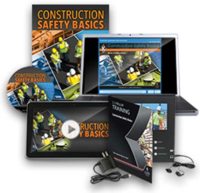B2B marketing goes mobile, emphasizes content and adopts a new mindset

B2B e-commerce sales in the U.S. will grow from $780 billion in 2015 to an estimated $1.1 trillion in 2020, according to Forrester Research’s “U.S. B2B E-Commerce Forecast: 2015 to 2020” report released earlier this year. Growth will be driven by business buyers purchasing more products and services online, plus better e-commerce technology.
According to the report, e-commerce will make up 12.1 percent of all B2B sales in the U.S. in the next five years, up from 9.3 percent in 2015.
Forrester found that 74 percent of B2B buyers research at least half of their work purchases online, and 30 percent complete at least half of their work purchases online. By 2017, 56 percent of B2B buyers will complete at least half of their work purchases online.
Industries leading B2B e-commerce purchasing in terms of revenue are petroleum and pharmaceutical, Forrester said.
e-commerce drivers
What’s behind surging e-commerce growth in the next five years?
• Changes to B2B buyer preferences. Today, 74 percent of B2B buyers research at least one-half of their work purchases online. In addition, 30% of today’s B2B buyers complete at least half of their work purchases online. With that percentage nearly doubling to 56%
by 2017, B2B sellers will see
a significant volume of offline business move online in the next few years.
• The opportunity for B2B firms to reduce the cost to serve customers. B2B companies report cutting their cost to serve dramatically by migrating customers online. In addition, in a 2013 Forrester survey, 56 percent of B2B e-commerce executives said that they have certain customers that they can only profitably support online.
• The value of building loyal multichannel B2B customers. Omnichannel customers spend more than single-channel, offline-only customers. For example, 60 percent of B2B companies report that their B2B buyers spend more overall when those customers interact with multiple channels. Omnichannel B2B customers are also more likely to become repeat and long-term customers.
Customers who don’t read email
Think of all those trashed messages — unread personal emails, unopened work emails, unopened SMS messages, unread notifications from Facebook, among others. Chances are your customers pay more attention to some of the channels than to others.
B2B marketers looking to engage customers may have thought they had gained their trust when they gained permission to send emails. But mobile came along and changed the game. Now digital business professionals and marketers worked hard to drive app downloads. But overwhelmed customers stopped opening or using these apps. Now if you want to reach customers or potential customers, you have to gain consumer permission to receive push notifications.
Reaching your buyers on their mobile devices is full of challenges. Permission lies with each application. Marketers or digital business professionals who want to engage consumers through notifications or conversations on their mobile devices must:
Establish trust on many platforms. Forrester Research refers to this as borrowing mobile moments. A handful of companies – Google, Facebook, Apple, Amazon, and Yahoo! among others – own a disproportionate number of mobile moments with your customers. As a marketer, you must gain permission to engage with your customers not only on your own app, but also on the apps of your ecosystem partners.
Leave behind your PC-paradigms. As Forrester’s James McQuivey says, “When brands adopt new technologies, they do old things in new ways. When they internalize a technology, they do new things.” Too many professionals are doing old things in new ways. They are carrying email paradigms to mobile devices. These tactics will fail. Notifications sent daily or based on time will fall short as will lengthy messages and lines to web pages.
Use context to initiate mobile messages. Customers expect immediacy, simplicity and context on mobile devices. Take a page from the consumer business world — only context matters in initiating messages. Advice to consumer businesses: Ask customers to pay bills when they are due – not days beforehand. Tell them a flight is late as soon as possible so they can take action.
Build your own best practices. Message frequency depends on context. There is no fixed expectation from your customers. Use mobile analytics or marketing automation solutions to do A/B testing and define your own best practices. Send coupons for ten percent off the next purchase in a and once a month is probably enough. If a tornado is headed toward your town, sending a message every 30 seconds might not be sufficient. Test, fail, learn and develop your own best practices.
Source: Forrester Research. Forrester Research (Nasdaq: FORR) is one of the most influential research and advisory firms in the world. We work with business and technology leaders to develop customer-obsessed strategies that drive growth. Forrester’s unique insights are grounded in annual surveys of more than 500,000 consumers and business leaders worldwide, rigorous and objective methodologies, and the shared wisdom of our most innovative clients. Through proprietary research, data, custom consulting, exclusive executive peer groups, and events, the Forrester experience is about a singular and powerful purpose: to challenge the thinking of our clients to help them lead change in their organizations.
The new norm
B2B selling has changed completely. Most of your sales take place remotely. Conversations and face-to-face meetings are fewer and further between. B2B buyers are operating in a world of information overload. A simple keyword search for any specific product or service yields hundreds or thousands of options. To keep your prospects engaged, consider the following:
Mobile optimization: The technology world has pivoted again with the introduction of smartphones and tablets. Content consumption, selling and the very way that we do business is changing. More than 90 percent of Americans own a cell phone; 64 percent own a smartphone and 42 percent own a tablet. It’s impossible to predict what device your prospects will view your content. Still it’s essential to know that it’s likely to be a mobile device at least part of the time. Content needs to be optimized for the mobile environment.
Content must be rich: Personalization still plays an important role in follow-ups with prospects. Think about sending the right content at the right time. If a prospect has a question about whether firms in their space have used your product, they’re looking for detailed information like an industry-specific case study. Prospects’ expectations around content have created the need for a larger, more diverse base of content assets and flexible ways of packaging and sharing that content.
Internal advocates: It’s infrequent that a single employee, especially in safety, will have complete and final buying authority. Safety managers, particularly in small and mid-size firms, often must convince their boss that their preferred safety solution is the right one. Help your internal safety advocates make the case. Consultative selling often involves helping others advocate for your brand.
A sales presentation app like PointDrive allows your sales team to create customized content experiences for all your prospects. The PointDrive app provides the flexibility to meet changing content needs and adapt to any situation – from providing an industry relevant experience for a prospect to creating the tools needed by your internal advocate.
Source: Brian Cuttica is the director of sales and marketing for PointDrive. Brian is responsible for revenue generation. He focuses on implementing an effective sales process, growing new business, and increasing customer retention. www.pointdrive.com
Embracing digital
As the world’s businesses embrace the digital marketplace, B2B marketers need to leverage all of their assets to create thriving e-commerce businesses in 2015 and beyond. There are five important focus areas that can boost B2B businesses’ sales – particularly those made through e-commerce platforms.
Omni-channel sales consistency
In a recent report from Forrester, “Building The B2B Omni-Channel Commerce Platform Of The Future,” B2B buyers “expect an omni-channel experience where they can view product information, analyze activities, see account history, take delivery, and return and exchange across all channels.” In fact, 68 percent highlighted the importance of viewing all purchasing activities across all channels, and 75 percent of buyers internationally said they would buy again from suppliers that have seamless omni-channel capabilities. This is a clear call from B2B buyers: they are looking for a consistent buying experience, no matter if it’s with your sales rep, or working in a self-service e-commerce portal.
Simplicity
Data remains a critical component in B2B marketing, but the emphasis on simplicity is greater than ever. Distributor, wholesale and retail B2B buyers have a pretty specific idea in mind in terms of what they’re looking for. If your e-commerce site is simple enough to seamlessly direct them to what they’re seeking, based on their profile and past purchases, you can ensure a higher level of conversion.
Adoption
Incentivize your field sales reps to train your B2B customers – during visits – to order via your e-commerce site. The more comfortable your B2B customers are with your e-commerce site, the more likely they are to place orders online. It’s important to reward your sales reps for the online orders made by their B2B customers. This alleviates conflict between your field sales and online e-commerce business. To further encourage adoption among your customers, you can also provide pricing incentives for ordering online versus buying from a sales rep.
Integration
To get your customers in the habit of using your highly customized B2B e-commerce site, you must ensure the experience is complete. Merge your front-end e-commerce site with your back-end operations.
Using a B2B e-commerce platform that fully integrates with your back-end ERP allows for real-time synchronization of inventory, pricing, shipping and invoicing information. Your product catalog displays up-to-date inventory levels, your customers are presented with their specific pricing, and once an order is submitted on the web store, it’s automatically sent to the ERP system for processing. Your order-to-cash cycle time is minimized.
Mobility
In an ever-connected world, mobility is king. B2B brands and wholesalers are integrating mobility as a part of the B2B omni-channel sales experience. Mobility means that both customers using your e-commerce site and your sales force in the field can receive real-time inventory and timeline updates for order fulfillment and pricing. Cloud-based mobile app technologies allow for synchronizing orders to the cloud with your ERP-integrated B2B e-commerce sales platform in real-time.
Make your B2B e-commerce site accessible via a mobile app. Customers benefit from ease-of-use, accessibility, and speed of a native mobile app. And offline operation of the app provides the ability to make purchases even when internet connectivity is scarce.
B2B e-commerce is on its way into the mainstream. Use the tactics outlined here and your customers’ buying experience becomes as simple as the click of a button.
Source: Oren Ezra is the VP of Marketing for Pepperi, the mobile sales suite for brands and wholesalers. Oren has more than 20 years of experience in all aspects of B2B marketing, product management and professional services. Source: www.business2community.com
Looking for a reprint of this article?
From high-res PDFs to custom plaques, order your copy today!







